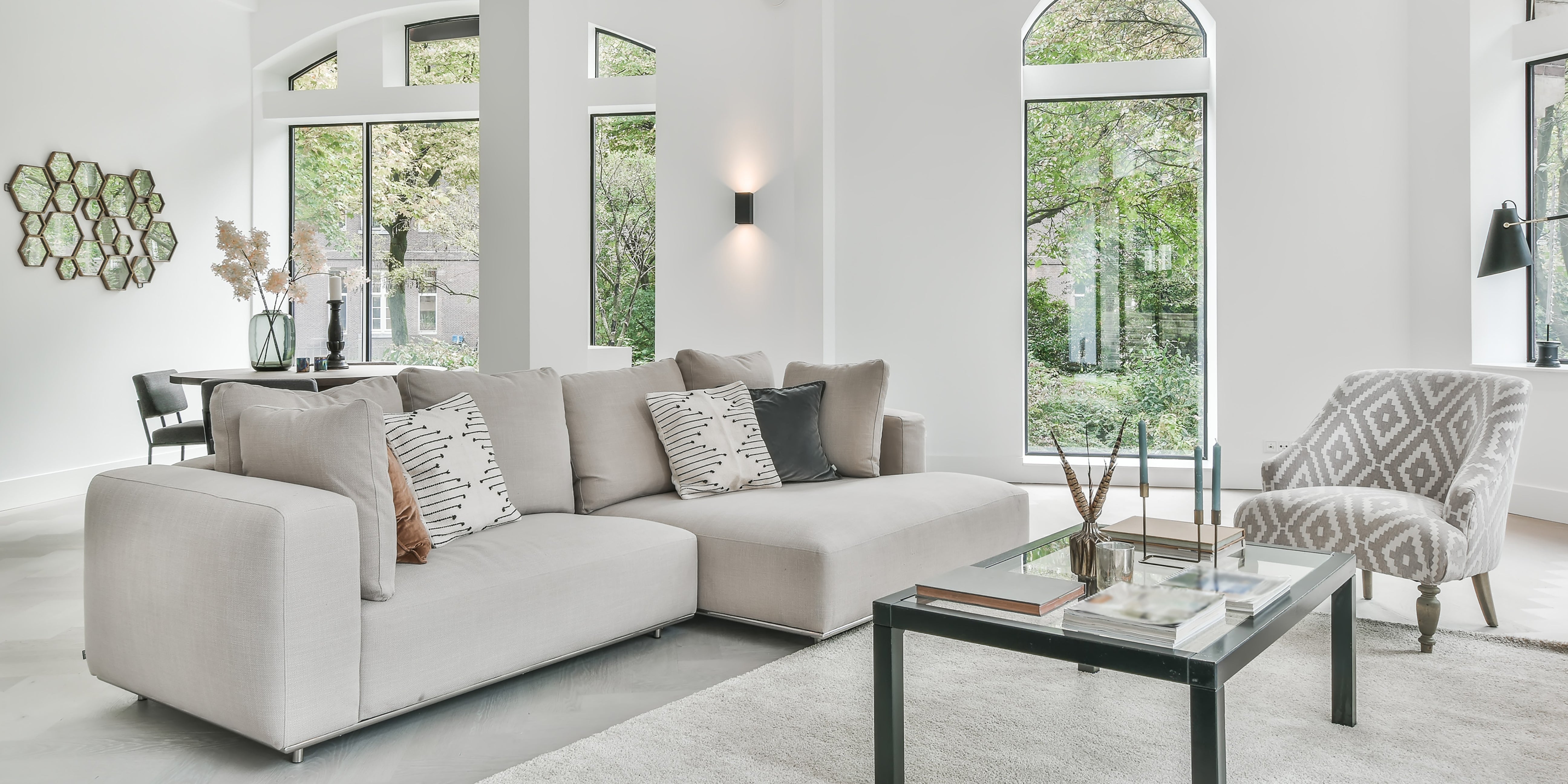Hempcrete: Creating Healthy and Sustainable Living Spaces
The Environmental Benefits of Hempcrete: Reducing Carbon Footprints and Promoting Sustainable Living
Hempcrete is a bio-composite made of the inner woody core of the hemp plant combined with a lime-based binder. This seemingly simple combination yields a building material with remarkable environmental advantages. Hempcrete's growth and manufacturing process inherently leads to a lower carbon footprint, as hemp plants absorb CO2 as they grow. When harvested and used in construction, this stored carbon remains locked within the hempcrete structure, thereby reducing the carbon dioxide levels in the atmosphere.
This carbon capture potential offers an effective method for mitigating climate change by sequestering carbon in the built environment. The overall carbon negativity of hempcrete construction—meaning it absorbs more carbon than it emits—provides a significant advantage over other traditional building materials like concrete and steel, which are substantial contributors to global CO2 emissions.
Beyond carbon capture, the sustainability of hempcrete also lies in its sourcing and disposal. Hemp is a fast-growing crop that requires minimal water and no pesticides, enhancing biodiversity and soil health. It is a renewable resource, in contrast to the finite supplies of sand and limestone used in concrete production.
At the end of its life cycle, hempcrete can be composted or reused, eliminating landfill waste and further contributing to a circular economy. This cradle-to-cradle approach contrasts with conventional construction methods, which often lead to significant waste and environmental impact.
Hempcrete: Enhancing Indoor Air Quality and Creating Healthier Living Environments
Beyond its environmental benefits, hempcrete also enhances indoor air quality, leading to healthier living environments. Hempcrete naturally regulates humidity levels within buildings, absorbing excess moisture when humidity is high and releasing it when the air is dry. This breathability contributes to a more comfortable and healthier indoor environment.
Volatile Organic Compounds (VOCs) can significantly affect indoor air quality. These compounds, commonly found in paints, furniture, and building materials, can lead to a range of health issues, including allergies and respiratory problems. Hempcrete naturally absorbs and neutralises these VOCs, thereby improving the air quality within the building.
Furthermore, hempcrete’s mold-resistant properties contribute to a healthier living environment. Due to its moisture-regulating capacity, it prevents dampness and the subsequent growth of mold and mildew, common culprits of poor indoor air quality and associated health problems.
Lastly, hempcrete does not emit any toxic gases when exposed to fire, unlike many conventional building materials. This is an added safety feature contributing to the overall health and wellbeing of the building's occupants.
Exploring the Thermal Comfort of Hempcrete: Energy Efficiency and Enhanced Well-being
Thermal comfort is crucial for both energy efficiency and occupant well-being. Hempcrete's unique thermal properties contribute significantly to these goals. It provides high thermal mass and insulation, helping to stabilise indoor temperatures across different seasons.
During hot periods, hempcrete absorbs and stores heat, reducing the need for air conditioning. In colder periods, the stored heat is slowly released, decreasing reliance on heating systems. This thermal buffering leads to significant energy savings, reducing both the cost for the occupant and the environmental impact of the building.
Moreover, the sense of comfort provided by hempcrete extends beyond mere temperature regulation. It provides a more natural, comfortable living environment by balancing humidity levels and reducing drafts. By eliminating sudden temperature changes, it ensures a stable and comfortable environment that promotes occupant well-being.
Hempcrete and Biophilic Design: Embracing Nature for a More Sustainable Lifestyle
Biophilic design, which seeks to connect occupants with nature, has been associated with improved health, well-being, and productivity. Hempcrete aligns naturally with this design philosophy.
By using hempcrete, a material directly derived from nature, designers can instill a sense of connection to the natural world in their buildings. Its earthy aesthetics, tactile feel, and the natural comfort it provides can help to foster a more sustainable lifestyle by emphasising the bond between humans and nature.
Beyond its aesthetic and emotional benefits, biophilic design also promotes sustainability. Incorporating materials like hempcrete reduces reliance on fossil-fuel intensive building materials, encouraging a more harmonious relationship with the environment.
Sound Insulation and Noise Reduction: The Acoustic Advantages of Hempcrete
Sound insulation is a key consideration in residential and commercial buildings. Hempcrete's inherent sound absorption qualities provide excellent acoustic performance. The porous nature of hempcrete allows it to dampen sound vibrations, reducing both airborne and impact noise. This results in quieter indoor environments, beneficial for residences in urban areas and spaces demanding high acoustic performance, such as offices or schools.
Creating Resilient Homes with Hempcrete: A Sustainable Solution for Climate Change Adaptation
Climate change adaptation is becoming an increasingly important factor in building design. Here, hempcrete’s unique properties offer potential solutions. For instance, its high resistance to pests, rot, and fire make buildings more resilient in the face of changing environmental conditions.
Furthermore, hempcrete's high thermal mass and insulating properties make it well-suited for adapting to increasing temperatures and extreme weather events associated with climate change. By reducing reliance on energy-intensive heating and cooling systems, hempcrete can help buildings stay comfortable and sustainable in a changing climate.
Hempcrete: A Breathable Building Material for Improved Moisture Regulation and Mold Prevention
Hempcrete's breathability is one of its key attributes. It allows moisture to pass through the material, avoiding condensation within walls and contributing to a more comfortable and healthier indoor environment.
This permeability reduces the risk of dampness, a common cause of mold growth in many buildings. Mold can lead to a multitude of health problems, including respiratory issues, allergies, and more. By naturally regulating moisture levels, hempcrete offers an effective solution to prevent mold growth, improving the overall indoor environment.
Promoting Sustainability and Regenerative Agriculture: The Role of Hempcrete in Green Building Practices
Hempcrete’s use in construction supports sustainable and regenerative agricultural practices. Hemp, the primary component of hempcrete, is a crop that improves soil health and promotes biodiversity. It is fast-growing and requires less water and no pesticides, making it a sustainable alternative to other crops.
The use of hempcrete can encourage the cultivation of hemp, thus contributing to more regenerative farming practices. This, in turn, can lead to a more sustainable built environment, promoting a cyclical relationship between agriculture and construction.
Hempcrete vs. Traditional Building Materials: Comparing the Environmental Impact and Health Benefits
Comparatively, hempcrete significantly outperforms traditional building materials in terms of environmental impact and health benefits. Concrete, for example, is responsible for around 8% of global CO2 emissions, while hempcrete actively absorbs CO2 during growth and throughout its lifetime in a building.
In terms of health benefits, hempcrete improves indoor air quality by neutralising VOCs, regulating humidity, and preventing mold growth. Traditional building materials, on the other hand, can often contribute to poor indoor air quality and related health issues.
Despite these benefits, it’s crucial to consider the challenges associated with using hempcrete. Currently, the lack of industrial infrastructure for hemp production and the unfamiliarity of many builders with this material pose barriers to its widespread adoption. Also, although it excels as an insulator, hempcrete is not load-bearing, which means it must be used in conjunction with other structural materials.
Building for the Future: How Hempcrete Contributes to Sustainable Architecture and Design
Hempcrete has immense potential to contribute to sustainable architecture and design. Its unique properties align with many principles of green and sustainable architecture, such as energy efficiency, use of renewable resources, and improved indoor environmental quality.
In the energy domain, the thermal mass and insulating properties of hempcrete can significantly reduce a building's energy needs, contributing to a more sustainable design. The material's carbon sequestration capability also aligns with growing interest in carbon-neutral or carbon-negative buildings.
Renewable resources are a cornerstone of sustainable design, and hempcrete scores highly in this area. Unlike many conventional building materials that rely on finite resources and generate significant carbon emissions during production, hempcrete is made from a fast-growing, renewable plant and has a low-impact production process.
Indoor environmental quality is another key focus area in sustainable design. Here, too, hempcrete offers substantial benefits. It improves air quality, regulates humidity, and creates a more comfortable and healthy indoor environment.
Hempcrete also aligns with the principles of biophilic design, which emphasises a human connection to nature. The material's natural aesthetics and tactile quality can enhance the sensory experience of occupants, contributing to their well-being.
The future of sustainable architecture and design could greatly benefit from hempcrete. However, challenges remain, including the need for industry standardisation, improved supply chains for hemp, and increased education among builders and designers about this innovative material. Addressing these challenges could pave the way for hempcrete to play a significant role in the green buildings of the future.
Summary
The Environmental Benefits of Hempcrete:
- Hempcrete, made from the hemp plant and a lime-based binder, significantly reduces carbon footprints due to its carbon capture ability during growth and use in construction.
- It surpasses traditional materials like concrete and steel in environmental friendliness, being carbon-negative and promoting sustainable sourcing and disposal, including compostability and reuse.
Enhancing Indoor Air Quality with Hempcrete:
- Hempcrete contributes to healthier living spaces by naturally regulating humidity, thus maintaining comfortable indoor environments.
- It absorbs and neutralises harmful Volatile Organic Compounds (VOCs) and is resistant to mold and mildew, further enhancing indoor air quality and reducing health risks.
Thermal Comfort and Energy Efficiency:
- Hempcrete's thermal properties, including high thermal mass and insulation, help stabilise indoor temperatures, reducing the need for heating and cooling.
- This leads to energy savings and a more consistent, comfortable living environment, contributing to occupant well-being.
Hempcrete in Biophilic Design:
- Hempcrete aligns with biophilic design principles, fostering a connection to nature and promoting sustainability.
- Its natural composition and aesthetics encourage a sustainable lifestyle and reduce reliance on fossil-fuel intensive materials.
Acoustic Advantages of Hempcrete:
- The material's sound absorption qualities offer excellent acoustic performance, making it ideal for urban residences and spaces requiring noise reduction.
- This results in quieter and more peaceful indoor environments.
Building Resilient Homes for Climate Change Adaptation:
- Hempcrete's resistance to pests, rot, and fire, along with its thermal properties, make it suitable for adapting to climate change impacts.
- It helps buildings remain comfortable and sustainable despite changing environmental conditions.
Moisture Regulation and Mold Prevention:
- The breathability of hempcrete allows for effective moisture regulation, reducing the risk of dampness and mold growth.
- This feature contributes to a healthier indoor environment and prevents common health issues associated with mold.
Promoting Sustainable Agriculture with Hempcrete:
- Hempcrete supports sustainable and regenerative agricultural practices due to hemp's soil-enhancing and biodiversity-promoting characteristics.
- Its use encourages more sustainable farming and construction practices, fostering a cyclical relationship between the two.
Comparing Hempcrete with Traditional Materials:
- Hempcrete outperforms traditional materials like concrete in environmental impact and health benefits, actively absorbing CO2 and improving indoor air quality.
- Challenges include the current lack of industrial infrastructure for hemp and the need for additional structural materials due to hempcrete's non-load-bearing nature.
Hempcrete's Role in Future Sustainable Architecture:
- Hempcrete aligns with green architecture principles, offering energy efficiency, use of renewable resources, and improved indoor environmental quality.
- Its potential in sustainable design is significant, but challenges like industry standardisation and increased awareness among builders need addressing.



Leave a comment